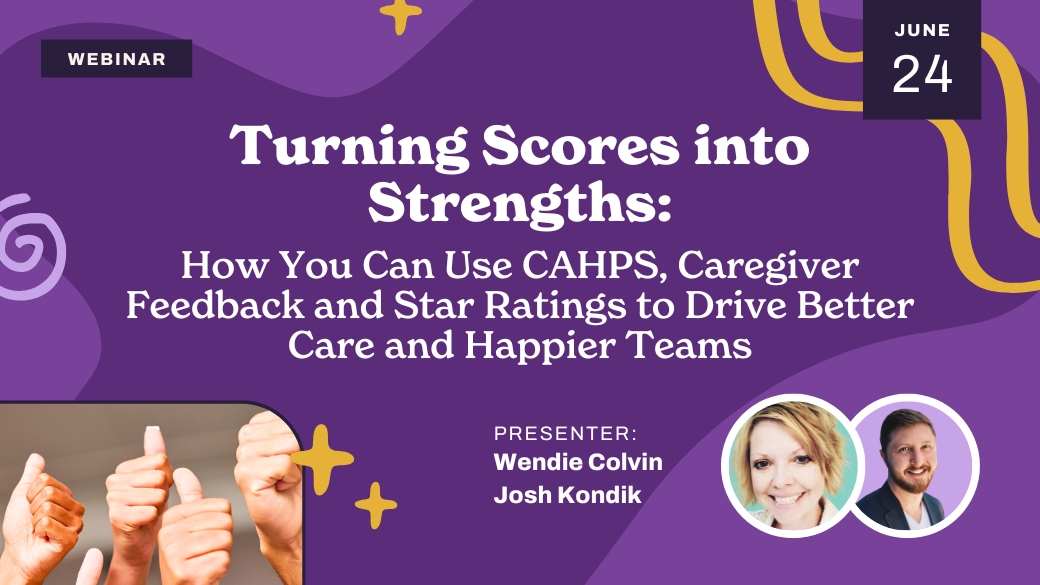Take Charge of Change: Where Does Private Duty Fit in the Continuum of Care?

Home care providers have a new challenge and a major opportunity: it’s time to step up and take a role in the larger continuum of care.
Private duty care has been the foundation of care in many home care companies today and certainly for many new agencies entering into the market place. This is also the care that has been serving individuals in the home the longest. Family members have been providing private duty care in the home for centuries. With many more choices for care in the home which include home health, palliative care, hospice care, and a variety of others is more in important than ever before to recognize where private duty fits into the continuum. A person’s ability to perform the most fundamental types of care often determine if they can or cannot remain independent in the home.
Private duty care is an answer to help with those tasks and is critical to fill the gaps in the intermittent care that other services typically do not provide. Now, with more focus on ALL care at home, private duty home care is in a key position to help more clients than ever before.
What the data tells us:
So, what does that mean for us in the private duty world? We will experience the opportunity to provide more care, to serve our clients in a variety of different settings, and to ensure the best outcome potential for our clients, our partners and their patients. For those in the private duty, personal care, and support world, it is critical to be familiar with these trends and make the necessary partnerships to remain relevant and active in the home care space for years to come.
- LIVE WEBINAR
Turning Scores into Strengths: How to Use CAHPS and Star Ratings to Create Positive Care Outcomes
What is a care transition?
On November 26, 2018, the Centers for Medicare & Medicaid Services (CMS) said, “Care transitions occur when a patient moves from one health care provider or setting to another. Nearly one in five Medicare patients discharged from a hospital—approximately 2.6 million seniors—are readmitted within 30 days, at a cost of over $26 billion every year. Hospitals have traditionally served as the focal point of efforts to reduce readmissions. They focus on the components that are directly responsible for, including as the quality of care, the hospitalization, and the discharge planning process. However, there are multiple factors along the care continuum that impact readmissions. Identifying the key drivers of readmissions for a hospital and its downstream providers is the first step to implement the appropriate interventions necessary to reduce readmissions.”

What does that mean for us? The continuum of care for our clients will become more important for those of us that provide care.
Consider this scenario: Interim HealthCare provides private duty care to Mrs. Jones in her home four hours per day, five days a week. She has had services for about eight months. Mrs. Jones fell after her aide left the home and was hospitalized. After she was discharged from the hospital, she was sent back home with intermittent care from a Medicare-certified agency. Mrs. Jones did not take her prescribed medications properly, and she was readmitted to the hospital two days later. If we had partnered with her Medicare-certified agency, we could have been back on our scheduled four hours per day and provided medication reminders (along with other duties) until she was back on her feet, likely preventing an avoidable hospital readmission. Our private duty agency can provide services along with a Medicare-certified agency, if we do not duplicate the services. This is often not understood, so it is important for all of us to work together to educate our clients, families, caregivers and referral sources.
With the right coordination of care and planning, we, along with our partner, would have gained additional billed day(s), contributed to their star rating and provided peace of mind to our client and their family.
Setting Up For Success
How do you set up your location(s) for success? Ask these questions of yourself and staff.
For the inside service team, clinical managers, field clinicians, sales and referral sources and caregivers, ask:
What factors can help you identify the Medicare Certified or Hospice patients are that could benefit from private duty home care?
How does private duty care help Medicare-certified and hospice agencies and their patients?
When is the best time is to offer private duty care to a Medicare-Certified or hospice patient?
Accountability and Making it Happen
Leadership must be familiar with the process and hold staff accountable. Things to review and know:
Set up processes to move patients across the care continuum. Is technology being used? Does the team understand and follow a process? Personal care and support, Medicare, and hospice organizations will have to explore and determine which organizations are the best fit for a partnership if they do not currently provide the continuum of care. We all want to offer the best care to our clients and patients, in the appropriate setting, with the most beneficial level of care.
Measurements and stars matter. With measurements on star ratings in the Medicare setting, now skilled nursing facilities (SNFs) and soon in hospice, it will become more important for private duty agencies to be able to show where they rank in terms of measurement” and stars. With no current governmental measurement for this standard, it will be important to be able to offer other proof. Whether this is from online reviews by current and past clients, employees, referral sources or from the Activated Insights Satisfaction Management Program, the reality is that those with the best reviews and scores will be the partners of choice. The same holds true when you begin to select your prospective partner for a Medicare or hospice relationship. It is critical that you do your homework. In addition to the company’s star ratings, it is important to meet with several different agencies to see which one has similar mission, vision and value statements.
The culture of an organization goes hand in hand with the care they provide. Make sure to speak to their referral sources, caregivers, clients and families. It can be difficult, and you may even feel a little hesitant when you begin to rely on other organizations. We are very protective of our clients and their well-being. Whether you are a corporate-owned organization, franchise-owned agency or privately-owned agency, you have worked hard to build your reputation and your business, so it is natural to become leery in the beginning. That is why it is critical to take your time and talk to as many companies as can before you find the right match. If you are in a city or even a rural community with a large geographic span, you may need to identify several different partners that provide the same services to be fully covered.
We will focus on the culture of Wellness when we bridge the different services together!
How do your potential partners train their employees? What is their culture towards recruitment, retention and on-boarding? What do their caregivers and clinical staff say when you ask them to describe their culture in one word? Why is their company the best place to work? What is their favorite part of their job? You can learn a lot about a company when you ask their employees.
The key thing to know is that it is only a matter of time until partnerships that provide the continuum will become the norm rather than the exception, so start to do your research now. Thank you to all who have chosen to provide services in whatever form, whether it is as an owner/operator, clinician, an inside team member or the outside team members that sell and provide service to our clients. The home care business is truly a calling, and those privileged to serve know and understand what that means.




